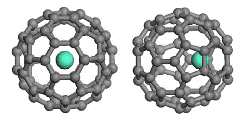Chemistry, Department of: Faculty Series

Xiao Cheng Zeng Publications
ORCID IDs
Xiao Cheng Zeng http://orcid.org/0000-0003-4672-8585
Yi Gao http://orcid.org/0000-0001-6015-5694
Document Type
Article
Date of this Version
2017
Citation
Nature Communications 8: doi:10.1038/s41467-017-01294-w (2017)
Abstract
In the recent Correspondence, Professor Henrik Grönbeck made several comments on the recently developed grand unified model (GUM), in particular using the ligand-protected gold cluster [Au25(SR)18]1− as an example. We noted that the latter cluster can be viewed as belonging to a special group of ligand-protected gold clusters that contain one or several icosahedral Au13 motifs. For this group of clusters, a secondary block Au13(8e) has been identified as a more convenient way to describe their structure anatomy and evolution. Another extension of the GUM is the identification of the new elementary block, Au3(μ3-S), with zero valence electron [referred as Au3(μ3-S)(0e)] to describe all crystallized ligand-protected gold clusters containing μ3-S motifs. In this correspondence, first, we discuss the purpose of GUM development in more detail. Next, we briefly discuss the secondary block Au13(8e) and show new computational results on the stabilities of Au3(2e) and Au4(2e) elementary blocks. Then two Au62+ clusters are used as the simplest example (a suggestion credited to a reviewer of ref. 2) to better explain the GUM and high stability of Au3(2e), followed by a summary and perspective.


Comments
Open Access This article is licensed under a Creative Commons Attribution 4.0 International License,